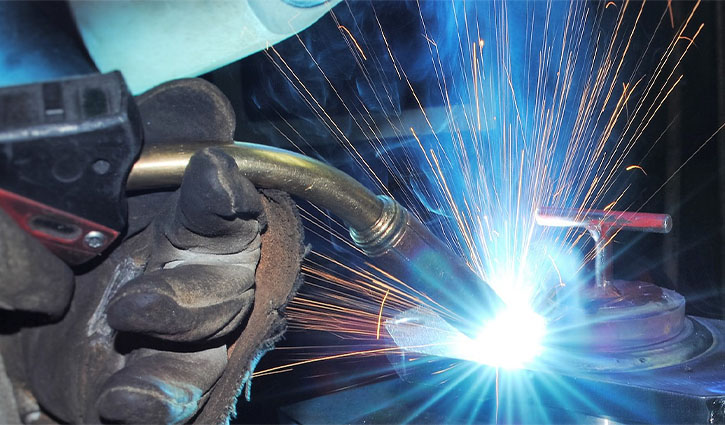Stick welding with a MIG welder is not quite suitable. Although it is possible to perform stick welding with a MIG welder with some adjustments, poor quality welding can be experienced.
Welders with constant current output are generally used in stick welding while MIG welders produce constant voltage output. As a result, MIG welders create adverse situations for stick welding.
To know more about stick and MIG welding, please go through the full article.
Is a MIG weld as strong as a stick weld?
Well, there is no straight answer to the question. It is a complicated process to figure out which one is stronger. The strength of MIG and stick welding depends on various factors like types of metals to be joined, thickness, welding environment, etc.
Both MIG and stick welding are capable of producing high-quality, strong welding. To join thin metals, MIG welding performs better and manufactures stronger welding. But for thick metal MIG welding is not suitable as its penetration capability is low.
Stick welding is capable of joining thick metals due to its high penetration profile. But it is quite difficult to perform stick welding. So, to weld thick metals, stick welding delivers stronger welding.
Read More: Can I Use Straight CO2 For MIG Welding: The Fact Behind
Why won’t my MIG welds stick?
While performing MIG welding, several problems may be encountered. One major problem is “the two welding parts don’t stick together.” So, to solve this problem, the speed of the wire feed is suggested to be reduced and the welding speed needs to increase.
Another major reason for this problem is excessive heat produced while welding. Excessive heat is mainly generated because of higher voltage output. So, the voltage output needs to be reduced to an optimum value.
We have to be careful to choose the output voltage as lower voltage may result in a poor penetration profile.
Which one is better: a stick welder or a MIG welder?
A welder machine widely known as a welder is required to perform welding. There are several types of welders, among them stick and MIG welders are the most widely used and each performs better in different case scenarios.
On thick material, stick welders perform better and produce a strong weld due to their higher penetration capability. But it is not preferred while welding thin material as it may fuse the base metals. MIG welders have the potential to produce better welding on thin material.
The environment also plays an important role in choosing the best welder. In outdoor conditions, MIG welders are not preferred as a slight breeze can interrupt the shielding gas which may result in discontinuous welding. Hence, MIG welders are recommended for indoor welding operations.
In outdoor conditions, a stick welder is more suitable than a MIG welder as there is no effect of surroundings on stick welding.
Read More: Best MIG Welder Under $500, $1000 In 2022 [Reviews & Buying Advice]
Which is easier to learn: stick or MIG welding?
It is much easier to learn MIG welding than stick welding. Although both of the welding processes require special skills, MIG welding is comparatively easy to master. It only takes a couple of days to be skillful at MIG welding.
But it is quite difficult to acquire skills in stick welding. Special training is required to get skilled at this welding technique. So, for beginners, it is not highly recommended to learn welding with stick welding.
Why is stick welding so hard?
As mentioned earlier, the stick welding process is quite hard and additional skills are required to maintain a constant arc in stick welding. But once stick welding is mastered, it gets easy and is possible to produce stronger welding.
The main problem that a beginner faces in stick welding is the electrode sticks to the base metals instead of melting when the ampere is low. But when the ampere is high, excess spattering may be encountered.
What is stick welding best for?
Stick welding has become the most popular welding method as it offers quality welding at a very low cost. It also shows the best suitability in various applications. To join steel structures and pipelines, there is no alternative to stick welding.
Stick welding also shows superior properties while joining metals are thicker than inches due to deeper penetration capability. Normally welding on dirty surfaces results in poor quality welding but stick welding shows an exception here. It can produce the best quality welding on dirty surfaces.
Another impressive property of stick welding is that it can ease the restrictions of welding. Stick welding can easily be performed in any complex position like vertical, overhead, etc.
Verdict
Stick welding is a popular type of arc welding in which metal rods/ sticks are used as electrodes and in MIG welding solid wire is used as electrodes.
In both cases, the electrodes are fused using electricity and provided as a filler material. Although both welding processes follow almost similar processes, it is not possible to stick welding with a MIG welder or vice versa.
Read More: 3g And 4g Welding: Similarities & Differences You Should Know
